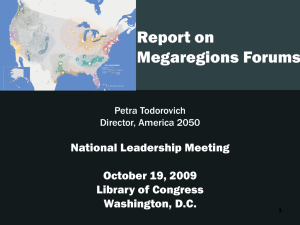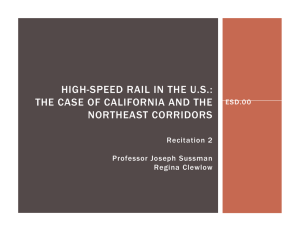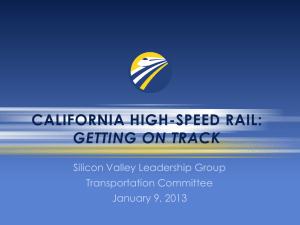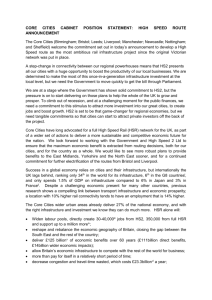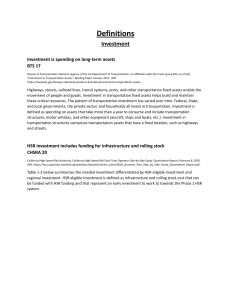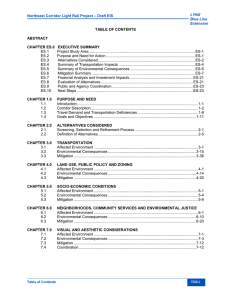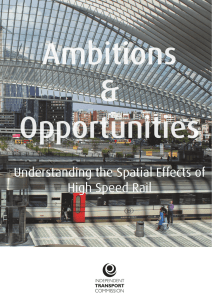passions High-Speed Rail D
advertisement
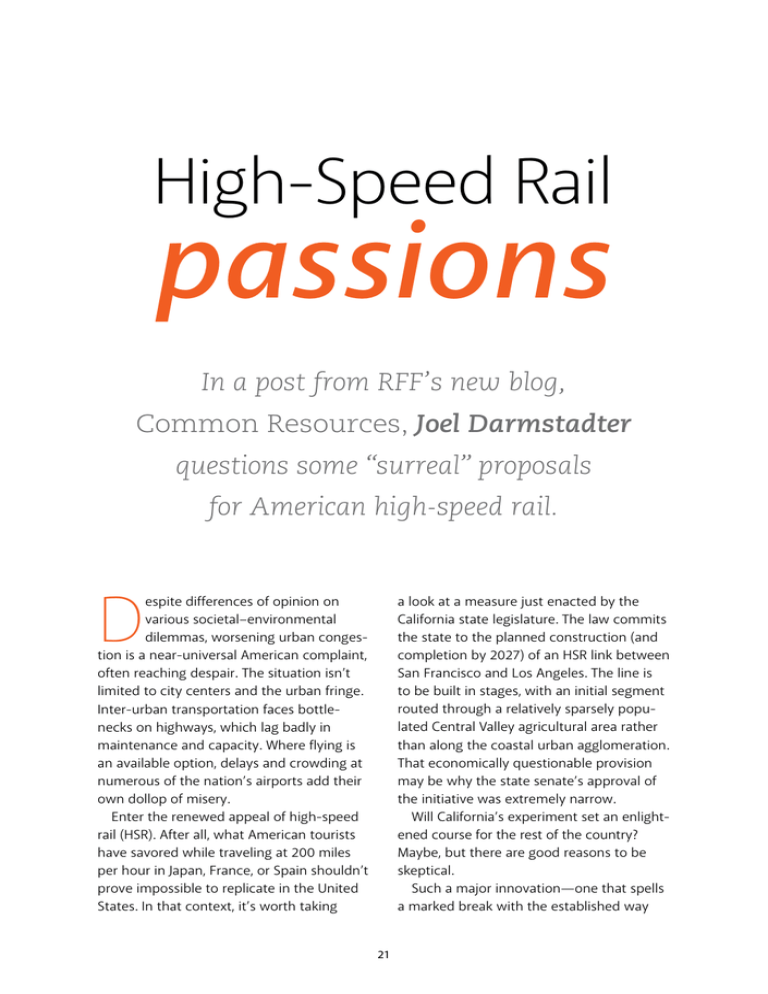
High-Speed Rail passions In a post from RFF’s new blog, Common Resources, Joel Darmstadter questions some “surreal” proposals for American high-speed rail. D a look at a measure just enacted by the California state legislature. The law commits the state to the planned construction (and completion by 2027) of an HSR link between San Francisco and Los Angeles. The line is to be built in stages, with an initial segment routed through a relatively sparsely populated Central Valley agricultural area rather than along the coastal urban agglomeration. That economically questionable provision may be why the state senate’s approval of the initiative was extremely narrow. Will California’s experiment set an enlightened course for the rest of the country? Maybe, but there are good reasons to be skeptical. Such a major innovation—one that spells a marked break with the established way espite differences of opinion on various societal–environmental dilemmas, worsening urban congestion is a near-universal American complaint, often reaching despair. The situation isn’t limited to city centers and the urban fringe. Inter-urban transportation faces bottlenecks on highways, which lag badly in maintenance and capacity. Where flying is an available option, delays and crowding at numerous of the nation’s airports add their own dollop of misery. Enter the renewed appeal of high-speed rail (HSR). After all, what American tourists have savored while traveling at 200 miles per hour in Japan, France, or Spain shouldn’t prove impossible to replicate in the United States. In that context, it’s worth taking 21 cally least-defensible HSR projects currently being contemplated at the behest of Senator Harry Reid and other Nevadans. The plan—and it is utterly surreal—to construct a line from Victorville, California to Las Vegas would force Angeleno visitors to the Strip to drive 80 miles in their cars before transferring to rail for the remaining 200 or so miles. That project, favored by the Obama administration, is in line for a $5 billion loan from the federal government. In the San Francisco–Los Angeles case, a $3 billion federal payment supplements an approximately similar state amount, allowing a start on the initial 130-mile segment of the project. And a recent update of Amtrak plans for a prospective Northeast Corridor high-speed rail line concludes that “federal funding is a crucial component and necessary to deliver major [Northeast Corridor] improvements.” At the end of the day, it has to be said that strengthened analysis will help sharpen the comparative merits of different regions’ aspirations for HSR service. But it is also the case that the prospects for long-term success, in California or elsewhere in the country, are higher if the first national experiment comes where conditions are best. That appears, in my judgment, to point to the Northeast. of doing things—had best be carried out under circumstances with enough prospect of success to serve as a kind of role model for a broader national HSR constituency. The California plans don’t fit that bill. In contrast, transforming the Northeast Amtrak Corridor (DC to Boston) into the first such US test case seems to me much closer to an ideal start-up decision when judged by several significant metrics: population density, proven ridership, overburdened airports, and existing trackage right-of-way (albeit without, as yet, a dedicated highspeed rail configuration). An economic comparison of the California vs. Northeast cases, in terms of underlying economics and demographics, was the topic of a New York Times blog post early this year by Rick Geddes, an associate professor of policy analysis and management at Cornell. Geddes’s observations are instructive: “A project should move forward if the revenue from all sources is sufficient to cover operating costs while making a contribution to its capital costs, including paying off debt and providing investors with an adequate return on their investment.” The proposed California line, as presently envisaged, fails to meet that test. For now, the Northeast Corridor, Geddes argues, should be our priority “if America wants true high-speed rail.” Of course, what holds in accounting terms needn’t hold in political terms. And the recognition that HSR confers social benefits not easily captured in a private market and financing environment means intense constituency-jockeying for determination of who contributes what. One thing is clear: beyond the state financing burden, the need for a federal role seems inescapable. But, at times, also politically nebulous. Take one of the most bizarre and economi- This article originally appeared on Common Resources, a new blog that features the highlights of RFF’s research, along with new, policy-relevant insights and debates. To read more, visit www.common-resources.org. Further reading Amtrak. 2012. A Vision for High-Speed Rail in the Northeast Corridor. Geddes, Rick. 2012. The Right Idea in the Wrong Place. Room for Debate, January 27. http://www.nytimes.com/ roomfordebate/2012/01/26/does-california-need-highspeed-rail/californias-high-speed-rail-is-the-right-idea-inthe-wrong-place. 22
